The Electronic Intifada 1 May 2019

A Palestinian protester hurls a stone towards Israeli occupation forces during confrontations that followed a weekly demonstration against the expropriation of Palestinian land by Israel in the village of Kfar Qaddum, near the West Bank city of Nablus, on 19 April.
APA imagesSix Palestinians were killed by Israeli occupation forces and settlers during the month of April, or died from wounds sustained previously.
Muhammad Ali Dar Adwan, 23, was killed during a raid on Kufr Aqab, a neighborhood of East Jerusalem in the West Bank, in the early hours of 2 April. Video shows that Dar Adwan came under heavy gunfire as he ran away from soldiers.
That same day, Faris Yusif Faris Abu Hijris, 26, died from injuries he sustained two days earlier when he was shot in the stomach during a protest in Khan Younis, southern Gaza, marking the Great March of Return’s one-year anniversary.
Two additional Palestinians were shot and fatally wounded by Israeli soldiers along the Gaza-Israel boundary during the month.
Maysara Mousa Suleiman Abu Shalouf, 15, died after he was shot in the stomach as he approached the northern boundary fence during Great March of Return protests on 12 April.
Ishaq Ishteiwi, 16, died in Israeli detention on 13 April from wounds sustained 10 days earlier, while he and two friends attempted to cross into Israel.
Executed by settlers
On 3 April, Muhammad Abd al-Fattah, 23, was shot and killed by Israeli settlers on a road in the northern West Bank.
Abd al-Fattah had thrown stones in the direction of passing Israeli cars when a driver opened fire at him. The driver got out of his car and fired several more times at Abd al-Fattah, and was joined by another Israeli driver who also fired on the young man at close range.
Israeli forces made no attempts to arrest the men who killed Abd al-Fattah and instead destroyed video footage “to ensure that the truth never comes to light and the shooters would not face any charges or be held accountable in any way,” the human rights group B’Tselem stated.
On 27 April, Omar Yunis, 20, died while being detained in an Israeli hospital from injuries sustained a week earlier after he was shot by Israeli Border Police at the Zaatara junction in the northern West Bank. Israel claims that Yunis had attempted to stab a Border Police combatant.
Forty-two Palestinians have died by Israeli fire during the year. Three Israelis were killed by Palestinians during the same period, though Palestinian factions have repudiated Israel’s claims of a nationalist motive for an Israeli woman’s killing by a Palestinian man in February.
Also during the month of April, a Palestinian laborer from the West Bank died while being arrested by police on suspicion of illegally entering Israel.
In Gaza on 13 April, Muhammad Hadayed, 18, died after he was shot by members of an armed faction near the southern boundary with Israel. Hadayed was traveling in a car with his father and they drove past the faction’s checkpoint without stopping. The fighters fired at the car after it didn’t stop, and Hadayed sustained two bullet wounds in the back.
Tear gas fired in schools
On 9 April, Israeli forces fired multiple tear gas canisters inside a school compound in Hebron during confrontations between soldiers and Palestinians in the area. “As a result, a total of 350 Palestinians, the majority of them students, required treatment after inhaling gas,” the UN monitoring group OCHA stated.
A school in Qalandiya refugee camp near the West Bank city of Ramallah was evacuated later in the month due to Israeli-fired tear gas during confrontations.
OCHA stated that this year it has “recorded 104 incidents where Israeli settlers killed or injured Palestinians or damaged Palestinian property, including over 2,500 trees, marking a 53 percent increase in the number of incidents compared with 2018.”
Israel allowed 500 Christian Palestinians to leave Gaza to celebrate Easter in Jerusalem, relenting to criticism after initially granting permits to only 200 out of 1,200 Christians in the territory. Those initial 200 permits would have allowed Palestinian Christians in Gaza aged 55 or older to leave only to Jordan, rather than Jerusalem or the rest of the West Bank.
On 30 April, Israel announced that it had reduced the permitted fishing areas off of Gaza’s coast to six nautical miles. The collective punishment measure was imposed after a rocket was fired from Gaza toward Israel, falling into the sea.
Israel had extended the permitted fishing zone to 15 nautical miles in southern Gaza on 1 April as part of a ceasefire agreement – the first time the zone was extended to this distance since the signing of the Oslo accords by Israel and the Palestine Liberation Organization more than 25 years ago. That agreement stipulates that Palestinians be allowed to fish 20 nautical miles from Gaza’s coast.
“Israel shrinks and expands Gaza’s fishing zone regularly, often as a punitive measure, causing great uncertainty and insecurity,” the human rights group Gisha stated.
Israeli forces regularly use live fire against Gaza fishers to enforce the restriction measures.
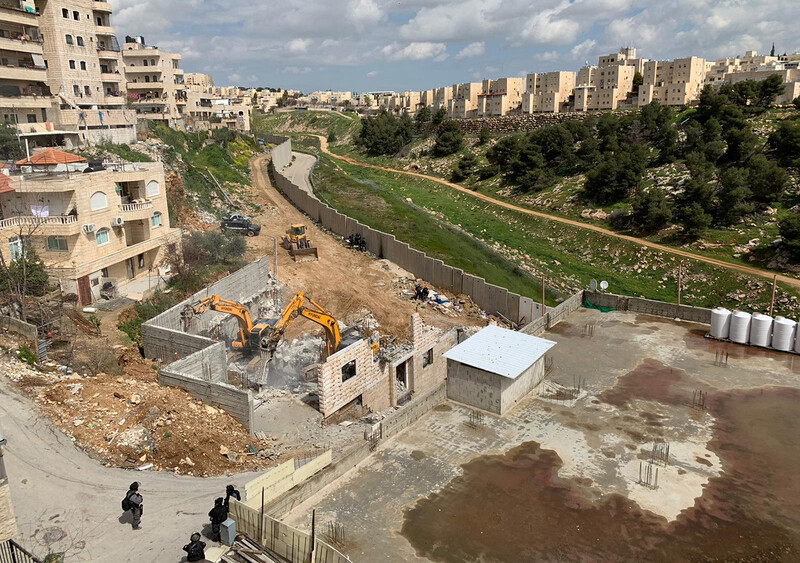
Israeli forces demolish a Palestinian home in East Jerusalem’s Shuafat refugee camp on the pretext that it was built without a permit, which are nearly impossible for Palestinians in the city to obtain, on 2 April. An Israeli settlement is seen opposite of the concrete barrier.
WAFA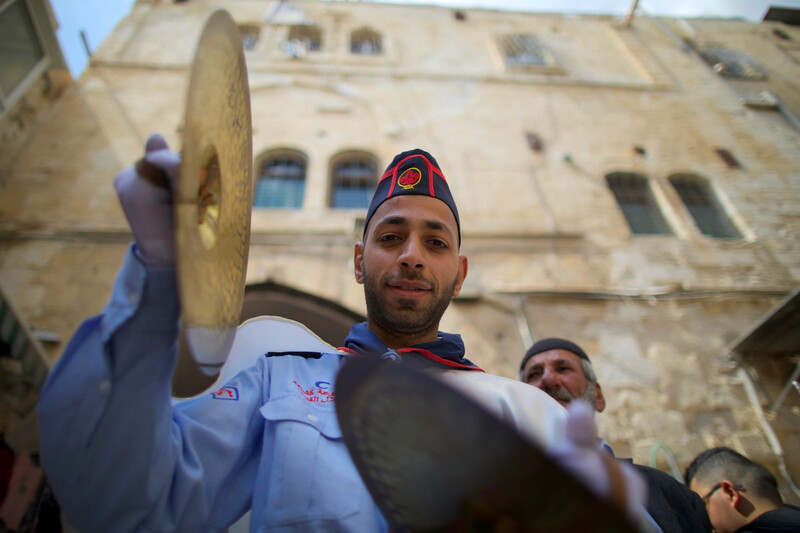
Muslim Palestinians celebrate the Islamic holiday of Isra and Miraj at the al-Aqsa mosque compound in Jerusalem’s Old City on 3 April. The holiday marks what Muslims believe is the Prophet Muhammad’s journey from Mecca to Jerusalem followed by his ascension to heaven.
WAFA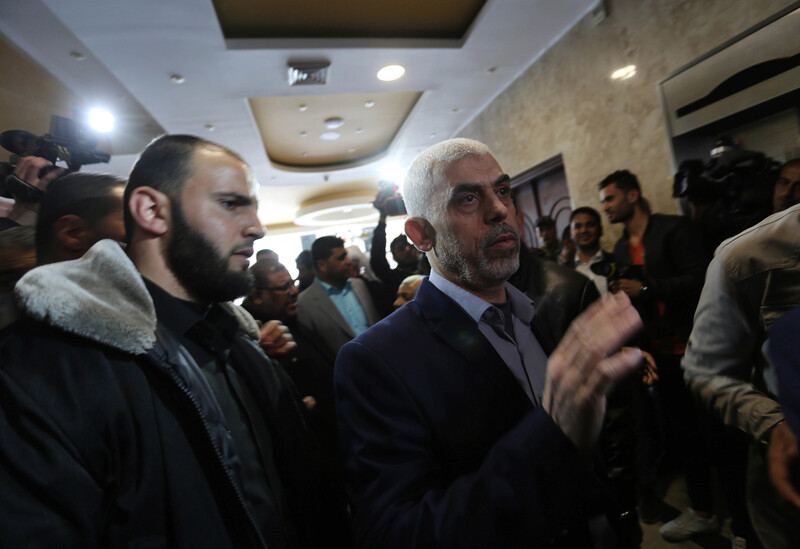
Yahya Sinwar, the leader of Hamas in the Gaza Strip, attends a meeting with leaders of Palestinian factions in Gaza City on 6 April.
APA images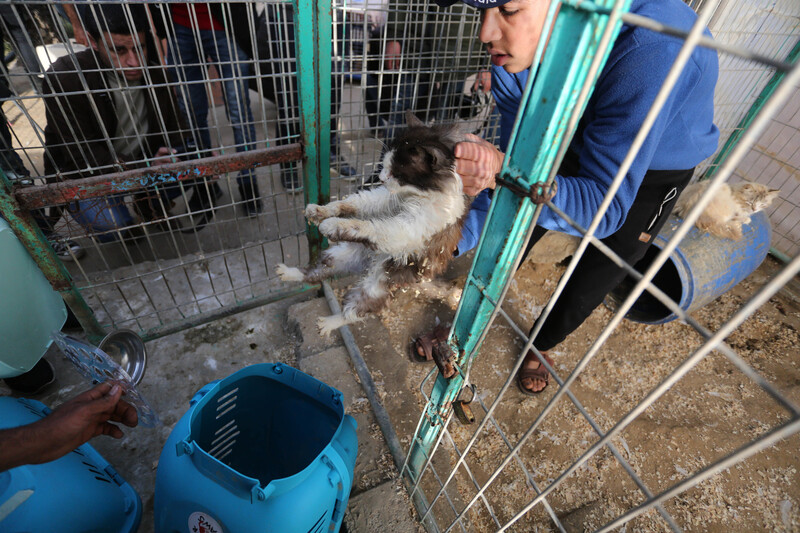
A Palestinian worker evacuates a cat at a zoo in Rafah, southern Gaza Strip, on 7 April. The international animal welfare charity Four Paws removed 40 animals, including five lions, from the squalid zoo in order to relocate them to sanctuaries in Jordan.
APA images
Palestinians dressed in Israeli prison uniforms sit in a mock cell during a Gaza City protest held in solidarity with Palestinians held prisoner by Israel on 9 April.
APA images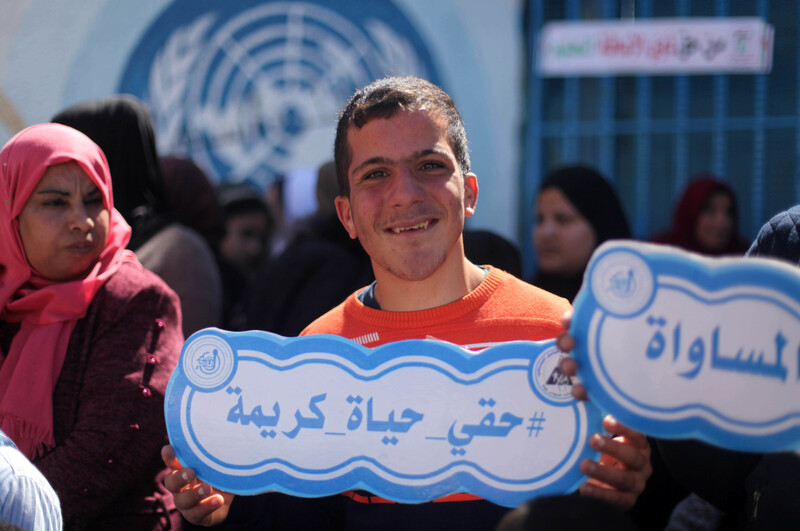
A man carries a sign reading “The right to a life with dignity” as Palestinians with disabilities demand their rights in front of the headquarters of UNRWA, the UN agency for Palestine refugees, in Gaza City on 11 April.
APA images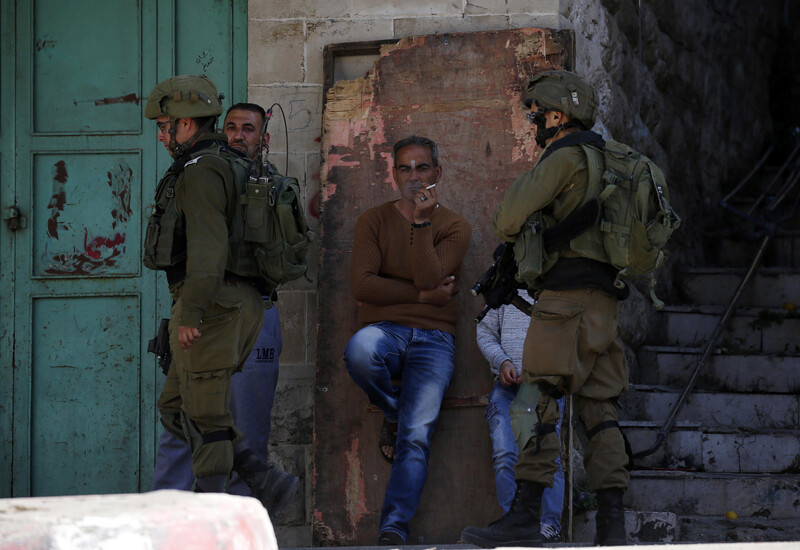
Israeli occupation forces detain a man during confrontations with Palestinian protesters in the West Bank city of Hebron on 12 April.
APA images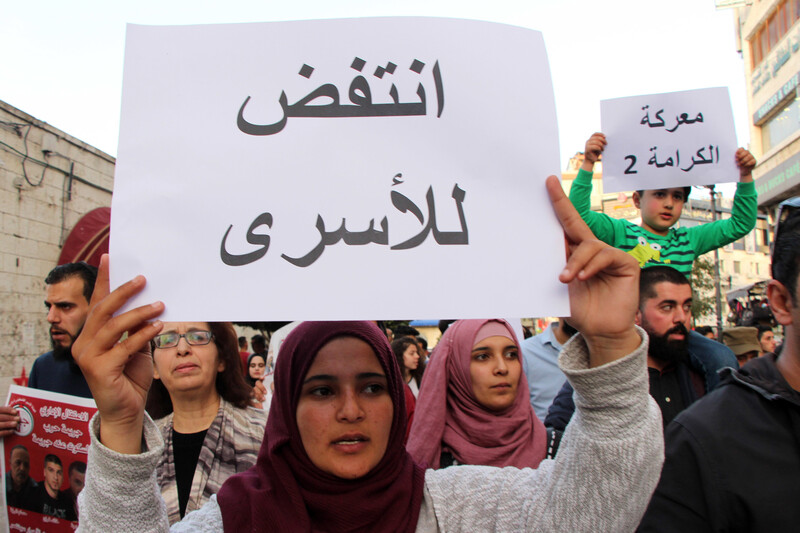
Palestinians in the West Bank city of Ramallah protest in solidarity with political prisoners held in Israeli jails on 13 April. Hundreds of Palestinian prisoners went on hunger strike the previous week after negotiations with the Israel Prison Service failed. The prisoners’ demands included improved medical care, more family visits and access to a public telephone.
APA images
Palestinian Authority leader Mahmoud Abbas looks on as appointed Prime Minister Mohammed Ishtayeh speaks during the swearing-in of the new government at the PA’s headquarters in the West Bank city of Ramallah on 13 April.
APA images
A Palestinian woman harvests wheat to prepare freekeh in Khan Younis, southern Gaza Strip, on 13 April. The ancient cereal is made from green durum wheat that is roasted and rubbed to create its flavor.
APA images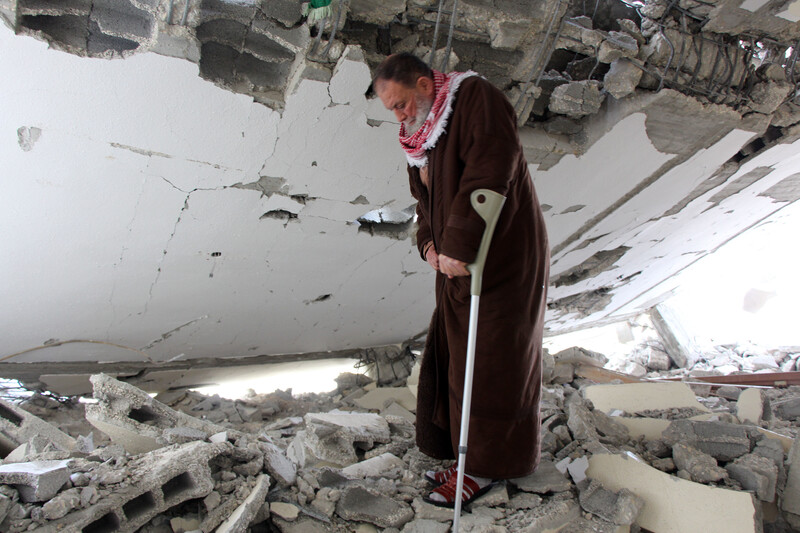
Omar Barghouti, the father of two Palestinian fighters recently arrested or killed by Israel, stands on the rubble of his home that was demolished by occupation forces in the village of Kobar near the West Bank city of Ramallah, 17 April. Assem Barghouti is being held by Israel for a shooting attack that fatally injured two Israeli soldiers in the West Bank in December. On 12 December, Assem’s brother Saleh was apprehended alive by Israeli forces, who announced his death hours later. Both brothers are accused by Israel of involvement in a West Bank shooting in December in which a pregnant Israeli woman was critically injured. Her baby, delivered prematurely, died a few days after his induced birth.
APA images
Fatah party supporters celebrate in the West Bank city of Ramallah after the student council elections at nearby Birzeit University on 17 April. The election is seen as a gauge of Palestinian politics writ large, and this year 78 percent of the student body participated in the campus vote. The Fatah-backed Martyr Yasser Arafat bloc received 4,056 votes and the Hamas-backed al-Wafa Islamic bloc got 3,997 votes. Both secured 23 seats in the 51-seat student council.
WAFA
Palestinians confront Israeli occupation forces during Great March of Return protests along the boundary with Israel in the southern Gaza Strip on 19 April.
APA images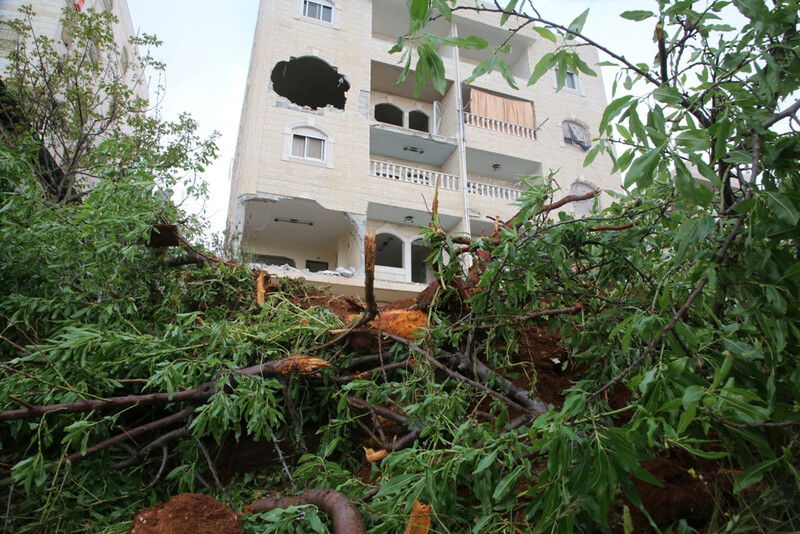
The home belonging to the family of Arafat Irfaiya in the West Bank city of Hebron after it was demolished on 19 April by the Israeli military in revenge for the rape and murder of a 19-year-old Israeli woman in a Jerusalem forest. Israeli forces destroyed two apartments belonging to Irfaiya’s family. Israel says that Irfaiya, who is awaiting trial, had nationalist motives but this was roundly rejected by Palestinian factions.
WAFA
A Palestinian jockey rides during an equestrian competition in Gaza City on 19 April.
APA images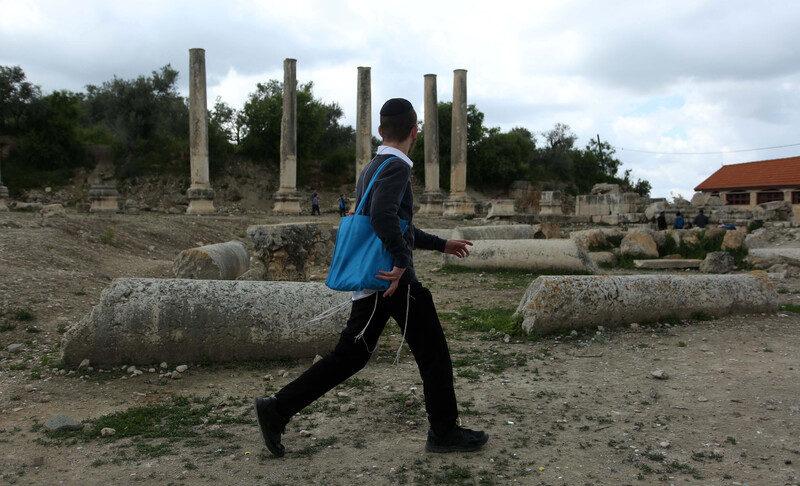
Israeli settlers celebrate Passover at an archaeological site in Sebastia, a Palestinian village in the northern West Bank, on 22 April. The Israeli military sealed off the village and prevented Palestinians from reaching the area for two days as hundreds of settlers held celebrations at the Roman ruins.
APA images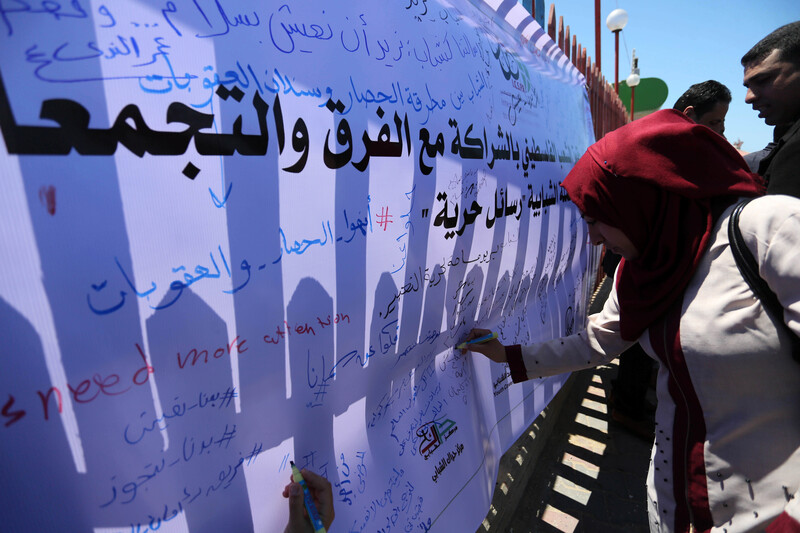
Palestinians write messages to the outside world on a banner during an event organized by the International Commission to Support Palestinian People’s Rights at the Gaza City seaport on 22 April.
APA images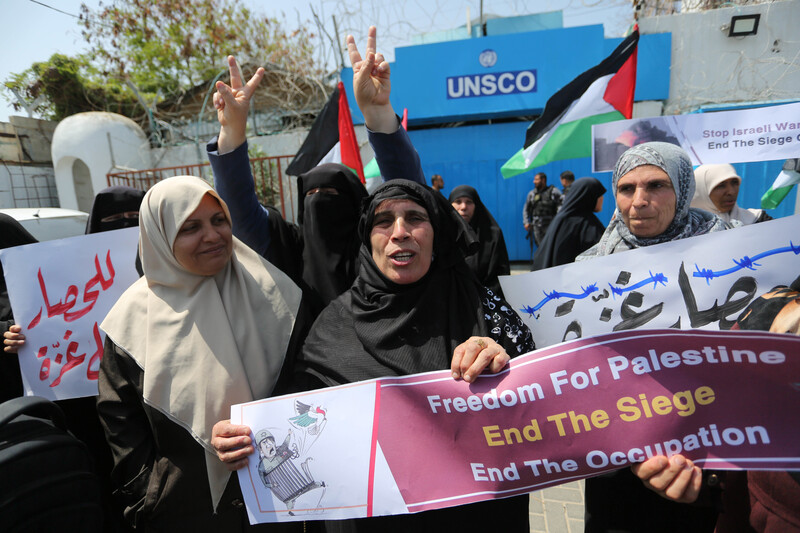
Palestinians protest against the Israeli blockade on Gaza in front of the Gaza City offices of UNSCO, the United Nations Special Coordinator for the Middle East Peace Process, on 23 April.
APA images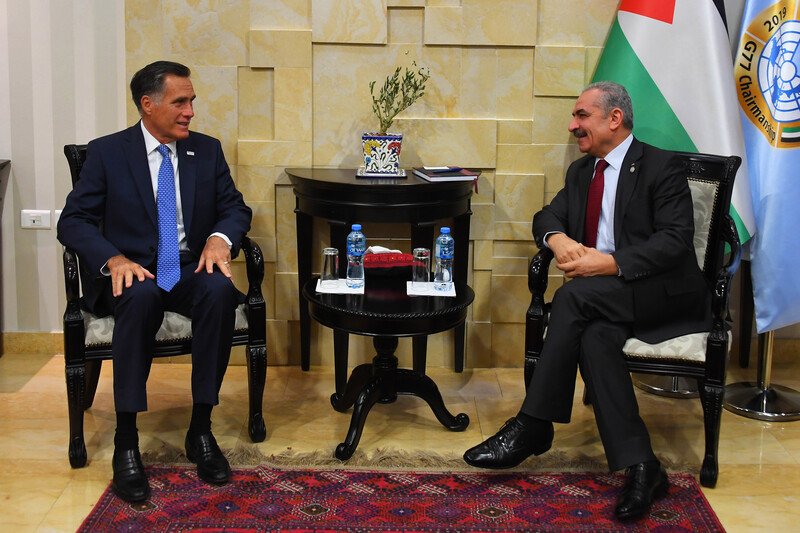
Palestinian Authority Prime Minister Mohammed Ishtayeh meets with US Senator Mitt Romney at Ishtayeh’s headquarters in the West Bank city of Ramallah on 24 April.
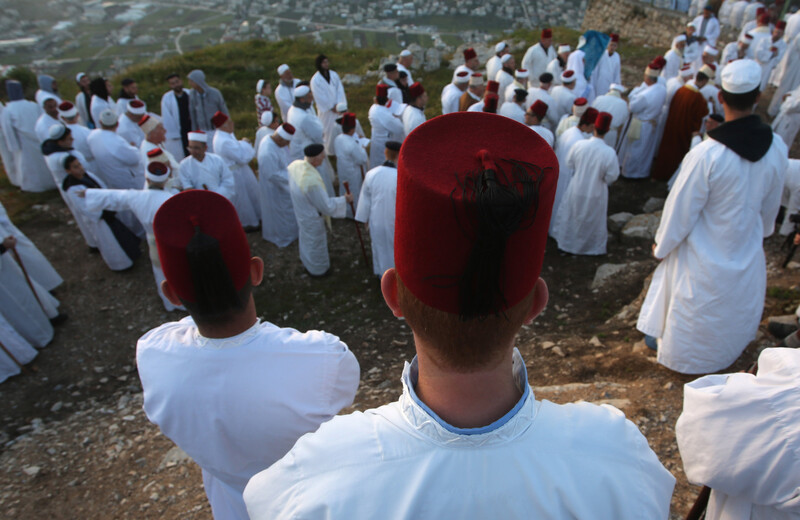
Members of the Samaritan sect mark the holiday of Passover atop Mount Gerizim near the West Bank city of Nablus on 25 April.
WAFA
Orthodox Christians attend the Holy Fire ceremony in the Church of the Holy Sepulchre in Jerusalem’s Old City on 27 April. Worshippers believe that the Holy Fire, which emanates from within the Tomb of Christ, spontaneously lights and represents the power of resurrection.
WAFA
Palestinian Christians attend Orthodox Easter service at the Church of Saint Porphyrius in Gaza City on 28 April.
APA images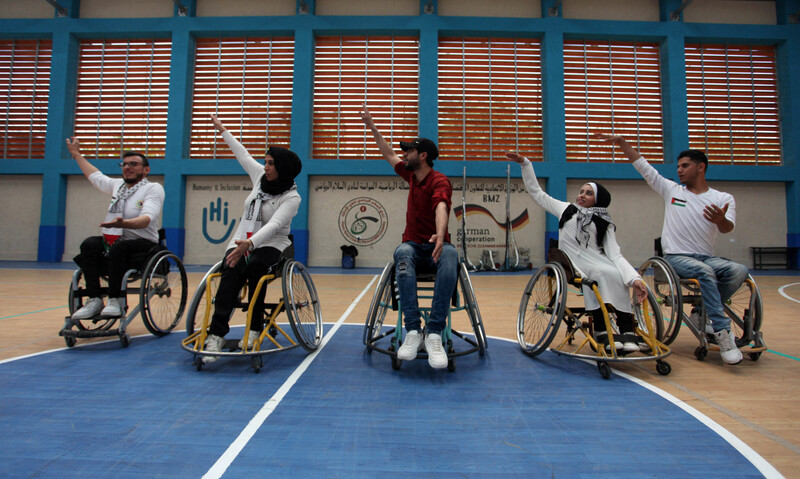
Palestinian wheelchair users take part in a dabke class at a club in Gaza City on 28 April. Dabke is a Levantine folk line dance widely performed at weddings and other joyous occasions.
APA images
Palestinian farmers use a threshing machine as they harvest wheat near the boundary with Israel in Khan Younis, southern Gaza Strip, on 29 April.
APA images

